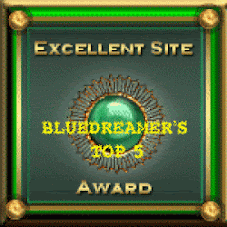Of course I did not foresee that the food was another main attraction in Cambodia. So yes, even if you don't really fancy all those temples, I still recommend that you go to Cambodia just for the food!
However, if you are a first timer to Cambodia, it would be a waste to not at least visit Angkor Wat and Angkor Thom. These are just two out of dozens of temple ruins scattered in the Angkor Wat Archaeological Park which was declared a UNESCO Heritage Site in 1992.
The Angkor Wat Archaeological Park is located in northern Cambodia, in the Siem Reap area. Can you see Angkor Wat and Angkor Thom in the map below? (Click to enlarge)

Map of Angkor Wat Archaeological Park courtesy of Canby Publications
To visit the temple ruins in the Angkor Wat Archaeological Park, you need to possess an admission pass. Passes can be purchased at the main entrance to the park (as shown in the map above). You can choose to buy a one-day (USD20), three-day (USD40) or seven-day (USD60) pass. The three-day pass is valid for any three days (not necessarily consecutive) within one week whereas the seven-day pass is valid for any seven days (again not necessarily consecutive) within one month.
Please note that they only accept cash payment and not credit card. Oh, by the way, although the currency in Cambodia is Riel (USD1 = 4,120 Riel), no one is really interested in Riel - basically only US dollar is used.
The pass will be checked upon each park entry and at major temples. A hefty fine will be imposed for not possessing a valid pass in the park so make sure you do not lose it! As the pass is just a piece of paper and easily gets torn, it is advisable to keep it safe in a plastic card holder.
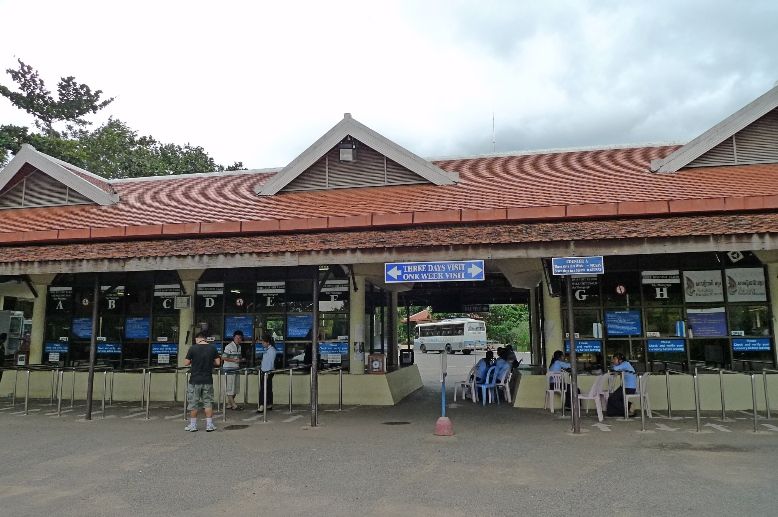
After lunch at Neary Khmer Restaurant, our driver Xiao He took us to purchase the admission pass. Jam, his friend and I purchased a three-day pass each. Then it's off to our first destination - the Bayon Temple!
Bayon is located at the centre of Angkor Thom, which was the last and most enduring capital city of the Khmer Empire. Constructed in the late 12th to early 13th century by King Jayavarman VII, Angkor Thom has a total area of 9 square kilometres which is really quite huge. It is enclosed by a square wall 8 metres high and 12 kilometres in length, and encircled by a moat 100 metres wide.

As you can see from the map above, the city of Angkor Thom has 5 entrance and exit gates - one for each cardinal point, namely the North Gate, South Gate, West Gate and East Gate as well as an additional gate called the Victory Gate located just north of the East Gate.
According to Xiao He, the North, South and Victory Gates are usually used to enter Angkor Thom. Both the East and West Gates are seldom used, especially the East Gate as it is known as the "Gate Of The Dead".
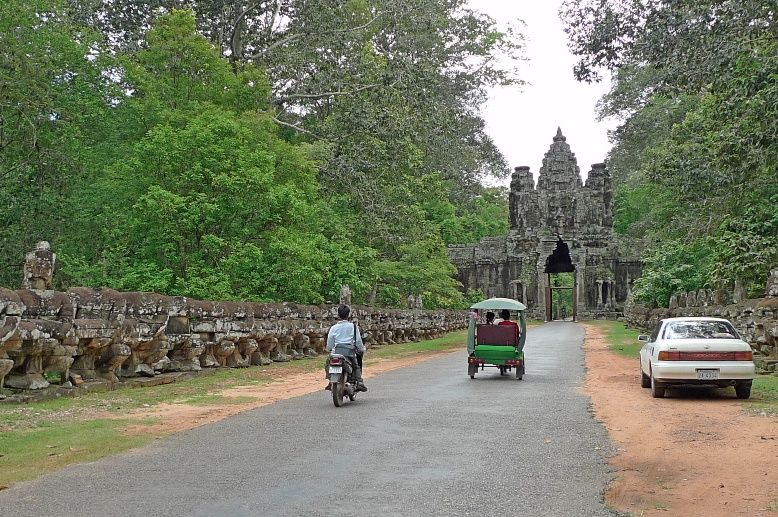
We entered Angkor Thom through the Victory Gate. There is a causeway leading to the gate. This causeway was built over the moat that surrounded Angkor Thom. See that white Toyota car? That's Xiao He's car. We sat in this car during our three days in Siem Reap.
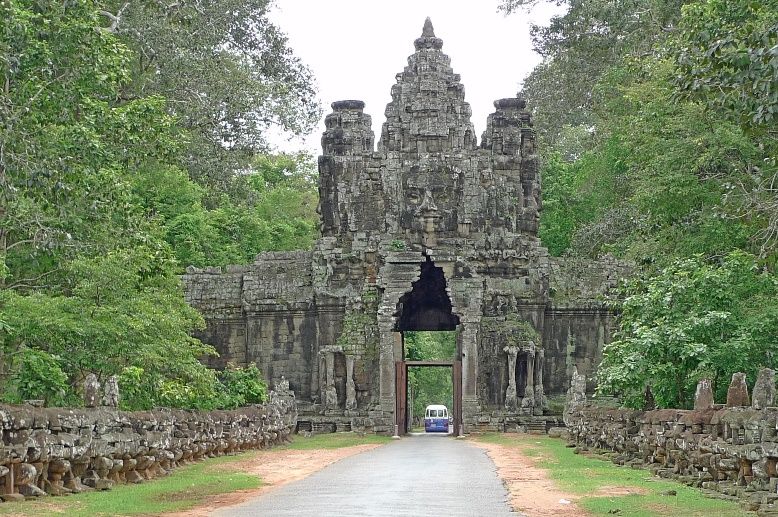
Giant statues lined up on both sides of the causeway - on the left are 54 gods or devas and on the right are 54 demons or asuras. The 54 devas appeared to be pulling the head of the seven-headed serpent called naga while the 54 asuras were pulling the serpent’s tail in the opposite direction.
This tug-of-war holding on to the naga is a depiction of the Hindu myth called Churning of the Ocean of Milk, in which devas formed an alliance with asuras to jointly churn the ocean for the nectar of immortality.
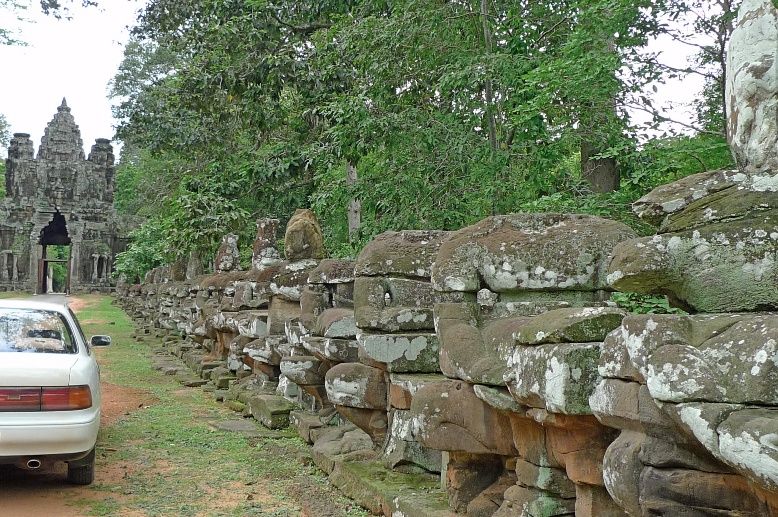
Most of the statues were broken and probably had their heads stolen. The next morning when we entered Angkor Thom again using the South Gate, we saw similar statues but they were more well maintained and preserved. I shall show you some of the photos in a future post.
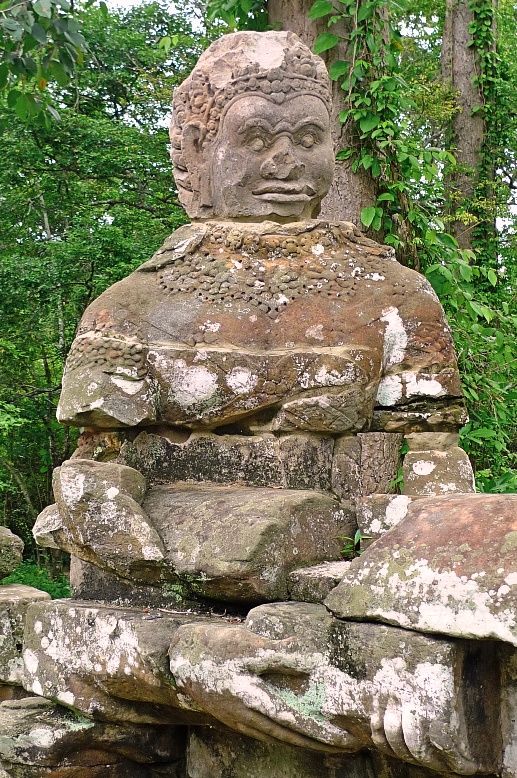
A demon or asura
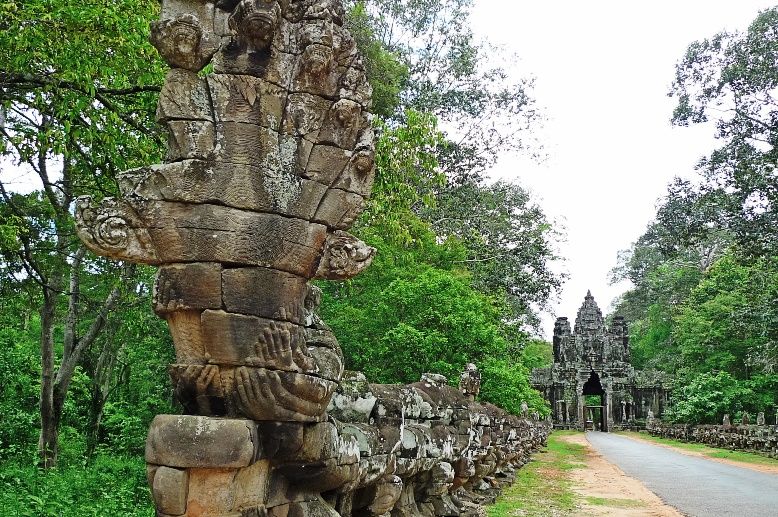
The seven headed serpent or Naga
Upon approaching the Victory Gate, we could see giant faces on top, each facing the four cardinal directions. The sight of these faces fascinated me to no end.

Thus began my interesting and wonderful tour of Cambodia's historical and archeological site!
Coming Up Next : Exploring Bayon


